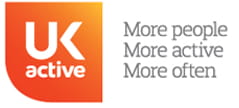Tennis players are the fittest athletes on the planet.
If like me, tennis is a summer activity that means your racket only sees action three or four time a year, then the title of this blog might seem a little fanciful. But bear with it: I really believe tennis players are the fittest athletes on the planet.
Okay, I am talking about the elite tennis players. Those guys and gals who play the international circuit and are ranked in the top 50-100 places in the world but, even so, every tennis player can follow an elite athlete’s training programme, even if they cannot hit the sweet spot or smash a winner every time. Let’s look at the evidence that stacks up my claim.
Distance travelled:
In the 2016 French Open fourth round match between Novak Djokovic and Roberto Bautista Agut, Djovik ran 4.3 kilometres and his opponent ran 4.6km. Later in the Final, Djokovic ran 3.4km, while Andy Murray ran 3.3km. In fact statistics prove Murray is one of the hardest workers on the circuit: in IBM’s top 10 of long distance tennis players, Andy Murray appears four times. (Reference: Tennis Abstract Blog)
But these figures aren’t anomalies. The average distance run in a top level match is 4.4km, or 20 metres per point. If you think about a match between Murray and Djokovic, the two players cover every area of the court and the rallies can sometimes be 20-25 shots long. That is a lot of running.
Flexibility
The next element of fitness required by a tennis player is flexibility. The serve starts it all off and that movement requires a high level of flexibility in the shoulder, elbow and back. Think about the movement, twisting, arching and reaching high to slam the ball with force and accuracy over the net. The difference between an ace and a double fault lies in the accuracy, flexibility and strength of the person serving.
Agility
Running from side to side, scampering to the net, retreating for a lob, jumping to put home a smash – the tennis player needs to be nimble and light on his to her feet and able to change direction quickly. Quite often re-adjusting a movement at the very last minute. This level of agility needs hours of work in the gym or on the training field and will be combined with great core strength and power in the lower body.
Strength
The serve is one of the areas where the contest is one of strength versus endurance. Big hitters such as Milos Raonic and Marin Cilic start a match with serves reaching 200kph but as the game goes on, so the frequency of those big serves lessen. For the players whose serves are less ferocious, such as Djokovic or David Ferrer, the longer the game continues, the more effective their service game becomes. This is because fatigue sets in as the muscles tire so if you are less reliant on strength and more reliant on accuracy and placement, then you are more likely to keep hitting the winning serves longer into the game.
Concentration
While so much of a tennis player and his or her fitness is about physical fitness, you cannot overlook the importance of mental strength. When you are on court for three, four or five hours, then being able to focus is paramount. There is no other sport that calls for such levels of concentration while under such high physical demands. Training the brain to cope with this pressure is as important for the tennis player as the hours spent on the court or in the gym.
Take a look at other sports for comparison:
Football – 90 minutes of walking, jogging and sprinting. Figures from the website sports scientists.com suggest a footballer will spend between 60-90 seconds in contact with the ball during a 90 minute match.
Golf – 18 holes will probably take up to four hours. In that time, the better you play the less contact you will have with the ball. Physically, a golfer will walk around five miles, giving him or herself plenty of time to become mentally prepared of the next shot.
NFL – an average NFL game lasts for just over three hours but a recent study by Quartz Media suggests that the ball is on play for just 11 minutes of that time. The majority of the match is spent watching play or standing in huddles discussing the next move.
Tennis players are the fittest athletes – is there really any debate to be had?












